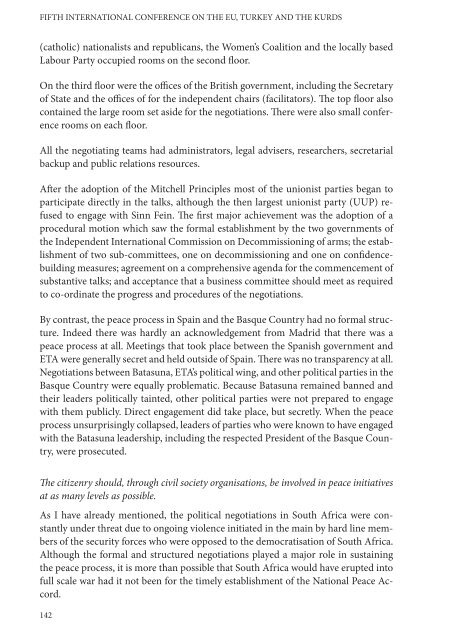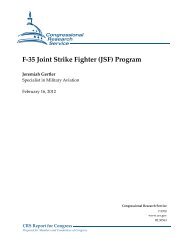FIFTH INTERNATIONAL CONFERENCE ON THE EU TURKEY AND THE KURDS
fifth international conference on the eu, turkey and the kurds
fifth international conference on the eu, turkey and the kurds
Create successful ePaper yourself
Turn your PDF publications into a flip-book with our unique Google optimized e-Paper software.
<strong>FIFTH</strong> <strong>INTERNATI<strong>ON</strong>AL</strong> <strong>C<strong>ON</strong>FERENCE</strong> <strong>ON</strong> <strong>THE</strong> <strong>EU</strong>, <strong>TURKEY</strong> <strong>AND</strong> <strong>THE</strong> <strong>KURDS</strong><br />
(catholic) nationalists and republicans, the Women’s Coalition and the locally based<br />
Labour Party occupied rooms on the second floor.<br />
On the third floor were the offices of the British government, including the Secretary<br />
of State and the offices of for the independent chairs (facilitators). The top floor also<br />
contained the large room set aside for the negotiations. There were also small conference<br />
rooms on each floor.<br />
All the negotiating teams had administrators, legal advisers, researchers, secretarial<br />
backup and public relations resources.<br />
After the adoption of the Mitchell Principles most of the unionist parties began to<br />
participate directly in the talks, although the then largest unionist party (UUP) refused<br />
to engage with Sinn Fein. The first major achievement was the adoption of a<br />
procedural motion which saw the formal establishment by the two governments of<br />
the Independent International Commission on Decommissioning of arms; the establishment<br />
of two sub-committees, one on decommissioning and one on confidencebuilding<br />
measures; agreement on a comprehensive agenda for the commencement of<br />
substantive talks; and acceptance that a business committee should meet as required<br />
to co-ordinate the progress and procedures of the negotiations.<br />
By contrast, the peace process in Spain and the Basque Country had no formal structure.<br />
Indeed there was hardly an acknowledgement from Madrid that there was a<br />
peace process at all. Meetings that took place between the Spanish government and<br />
ETA were generally secret and held outside of Spain. There was no transparency at all.<br />
Negotiations between Batasuna, ETA’s political wing, and other political parties in the<br />
Basque Country were equally problematic. Because Batasuna remained banned and<br />
their leaders politically tainted, other political parties were not prepared to engage<br />
with them publicly. Direct engagement did take place, but secretly. When the peace<br />
process unsurprisingly collapsed, leaders of parties who were known to have engaged<br />
with the Batasuna leadership, including the respected President of the Basque Country,<br />
were prosecuted.<br />
The citizenry should, through civil society organisations, be involved in peace initiatives<br />
at as many levels as possible.<br />
As I have already mentioned, the political negotiations in South Africa were constantly<br />
under threat due to ongoing violence initiated in the main by hard line members<br />
of the security forces who were opposed to the democratisation of South Africa.<br />
Although the formal and structured negotiations played a major role in sustaining<br />
the peace process, it is more than possible that South Africa would have erupted into<br />
full scale war had it not been for the timely establishment of the National Peace Accord.<br />
142





